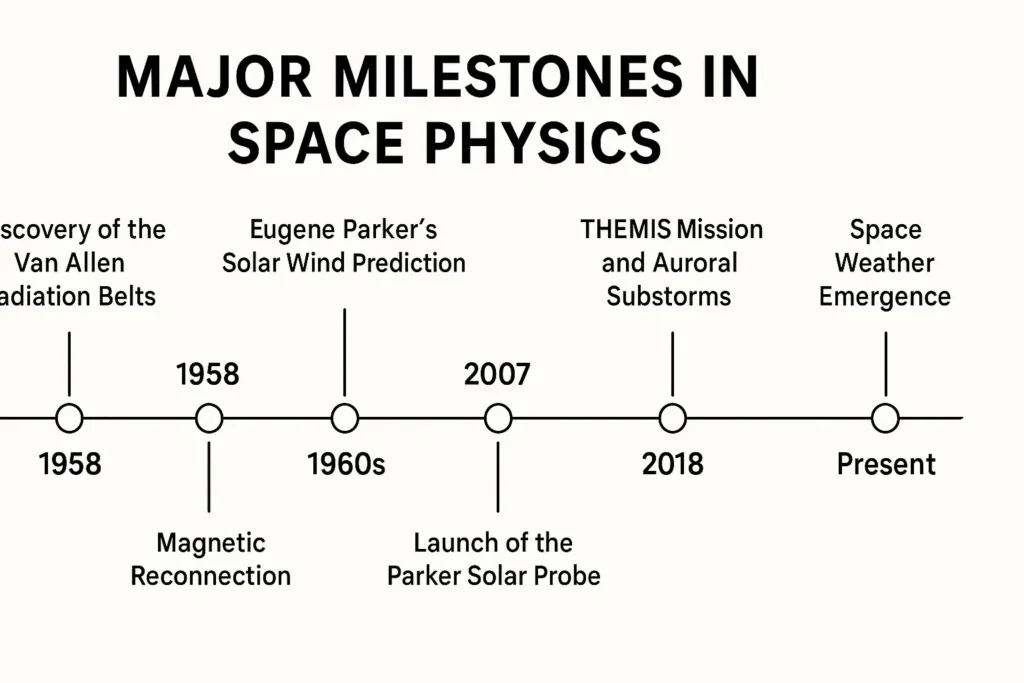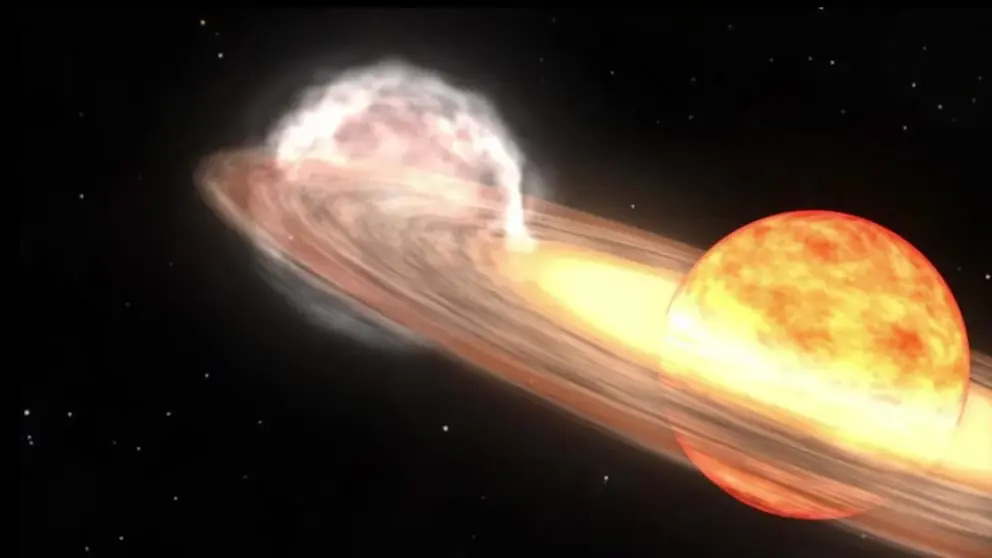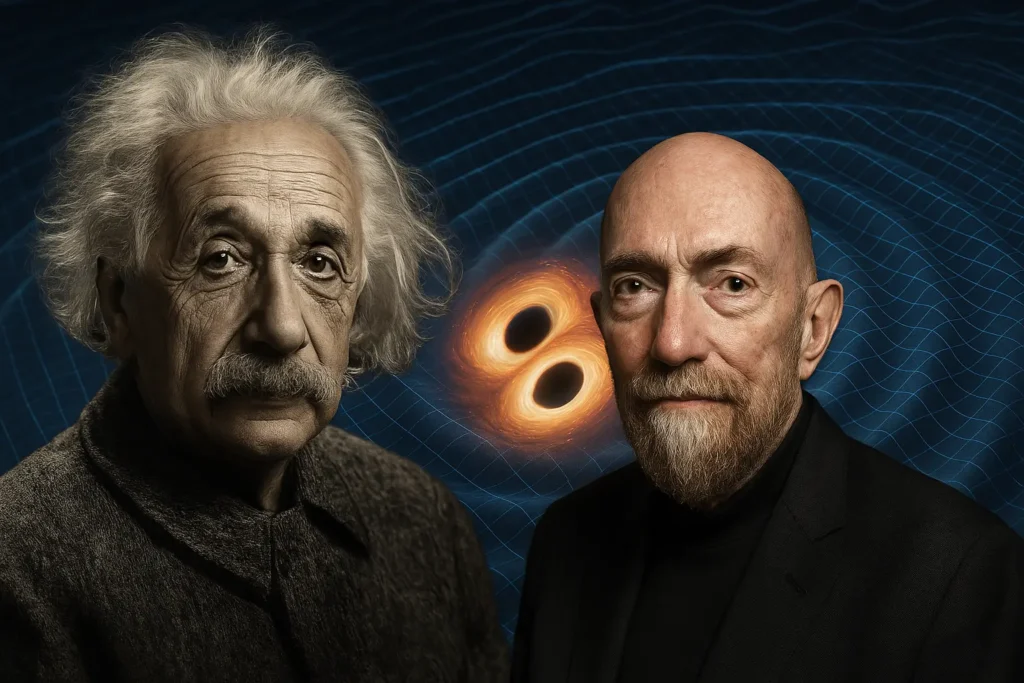Space physics is a vital subdiscipline of astrophysics and geophysics, focusing on the behavior of plasma in space environments—particularly around the Earth, the Sun, and throughout the solar system. It informs critical research in areas such as space weather, planetary magnetospheres, and solar-terrestrial interactions. Over the past century, pioneering theoretical frameworks and revolutionary satellite missions have shaped the field. This article explores the most significant historical milestones that have propelled space physics into a central role in modern science and technology.
The Discovery of the Van Allen Radiation Belts (1958)
In 1958, during the United States’ first space mission, Explorer 1, Dr. James Van Allen and his team made a groundbreaking discovery: Earth is encircled by two distinct zones of energetic charged particles, now known as the Van Allen radiation belts. These belts are sustained by Earth’s magnetic field and contain electrons and protons trapped by geomagnetic forces. The discovery confirmed that space is far from empty and initiated a deeper inquiry into Earth’s magnetosphere.
Eugene Parker’s Solar Wind Theory (1958)
In the same year, theoretical physicist Eugene Parker proposed that the Sun continually emits a stream of charged particles—a concept he called the solar wind. Based on hydrodynamic models of the Sun’s hot corona, Parker’s prediction was initially met with skepticism. However, subsequent satellite measurements, particularly from Mariner 2 in the early 1960s, provided direct confirmation. This revelation transformed our understanding of heliophysics and laid the groundwork for the emerging science of space weather.
Advancements in Magnetic Reconnection Theory (1960s–Present)
Magnetic reconnection—a process wherein magnetic field lines in plasma break and reconnect—was introduced in theoretical models by scientists such as Peter Sweet, Eugene Parker, and Harry Petschek during the 1960s. It has since become a foundational concept in explaining energy conversion processes in solar flares, coronal mass ejections (CMEs), and geomagnetic substorms. Recent missions, such as NASA’s Magnetospheric Multiscale Mission (MMS) launched in 2015, have captured high-resolution data validating these theories, directly observing reconnection events in Earth’s magnetosphere.
THEMIS Mission and the Nature of Auroral Substorms (2007)
Launched in 2007, NASA’s THEMIS mission (Time History of Events and Macroscale Interactions during Substorms) was designed to investigate the origin of geomagnetic substorms—short-lived disturbances in the magnetosphere that intensify auroral activity. THEMIS conclusively demonstrated that these substorms are triggered by magnetic reconnection events occurring in the magnetotail, roughly 20 Earth radii away. This insight significantly improved models of how solar wind energy is stored and released in Earth’s magnetosphere.
The Parker Solar Probe: A New Frontier (2018–Present)
In 2018, NASA launched the Parker Solar Probe, the first spacecraft to fly directly into the Sun’s outer corona. Named in honor of Eugene Parker, the probe is tasked with investigating the mechanisms behind solar wind acceleration and the anomalous heating of the corona. Among its early findings are the detection of “switchbacks”—sudden reversals in the Sun’s magnetic field—and unprecedented measurements of the electric and magnetic fields in the solar atmosphere. The mission promises to fundamentally reshape our understanding of solar dynamics and their impact on the heliosphere.
The Emergence of Space Weather Science (1990s–Present)
As human dependence on satellite systems and space-based infrastructure has grown, so too has the relevance of space physics to everyday life. Solar activity such as CMEs and solar flares can disrupt communication systems, GPS, and even terrestrial power grids. The field of space weather has emerged as an applied branch of space physics, aiming to forecast solar events and mitigate their impact on Earth-bound technologies. Government agencies, including NOAA’s Space Weather Prediction Center and the European Space Agency’s Space Weather Office, now actively monitor solar and geomagnetic activity in real time.
Conclusion
From theoretical breakthroughs to mission-critical observations, space physics has undergone a transformative evolution over the past six decades. Discoveries such as the Van Allen belts, solar wind, magnetic reconnection, and auroral substorm mechanisms have not only enriched our scientific understanding but also underscored the practical importance of studying the space environment. As spacecraft like the Parker Solar Probe continue to gather unprecedented data, space physics remains at the forefront of both fundamental science and technological safeguarding in the space age.



